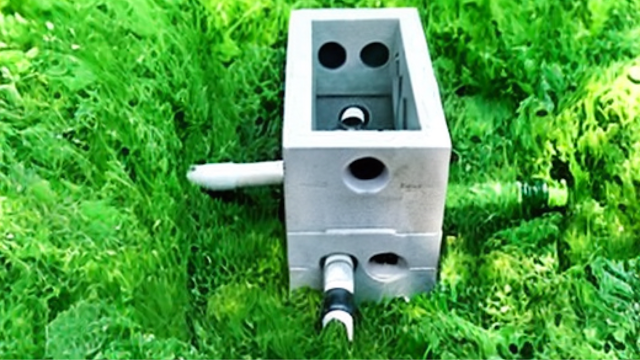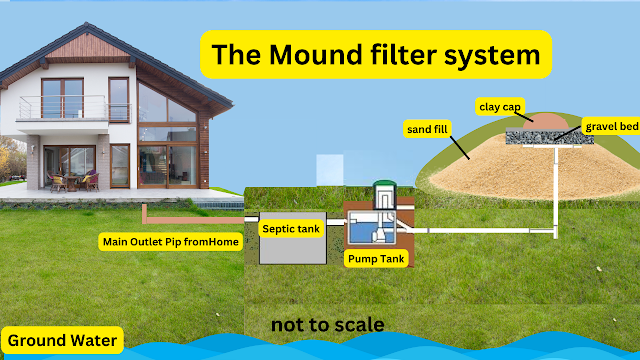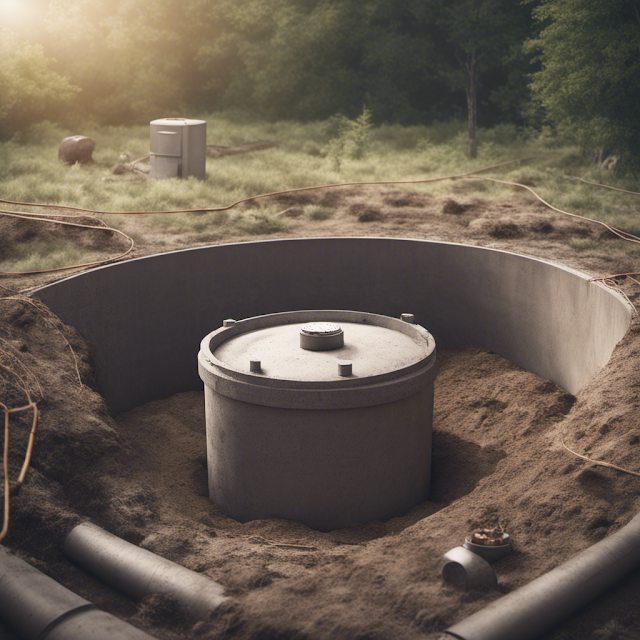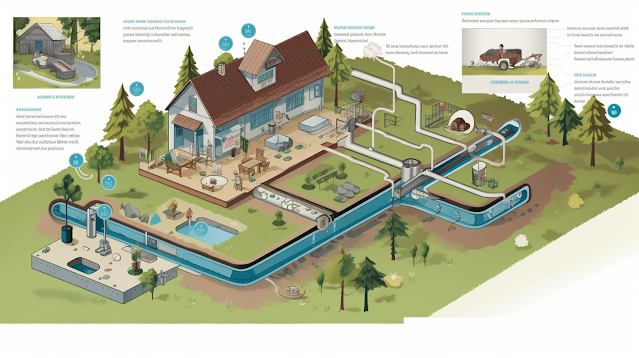The Evolution of Septic Systems: From Holes to High-Tech
 |
| The Evolution of Septic Systems |
From the humble beginnings of holes in the ground to the cutting-edge technology of today, septic systems have undergone a remarkable evolution. These waste disposal systems, once as simple as gravity-fed outhouses, have become sophisticated and efficient methods of managing household waste.
With the invention of the flush toilet by Thomas Crapper, indoor waste disposal became a reality, leading to the introduction of septic tanks and the subsequent development of leach fields and mound systems.
This article delves into the fascinating journey of septic systems, highlighting their advancements and the importance of troubleshooting in their maintenance and problem-solving.
Early Waste Disposal Methods
Man dug holes in the ground and built outhouses above them to dispose of waste in the early days. These early waste management practices were the historical sanitation practices of the time. Waste was delivered to the hole by gravity, and when the hole filled up, the outhouse was moved to a new location.
However, the introduction of the flush toilet by Thomas Crapper revolutionized waste disposal. The pit serving the toilet, known as a cesspool, was replaced by the septic tank. This watertight tank trapped waste, allowing it to decompose. Baffles were installed at each end of the septic tank to keep waste inside.
Over time, advancements in technology led to the replacement of steel septic tanks with more durable concrete tanks, and the development of leach fields to ensure proper soil absorption. These early waste disposal methods laid the foundation for the evolution of septic systems.
Thomas Crapper and the Flush Toilet
Thomas Crapper's invention of the flush toilet revolutionized waste disposal by allowing for indoor convenience and eliminating the need for manual waste removal. This breakthrough had a profound impact on sanitation practices, leading to significant improvements in public health.
Increased hygiene: The flush toilet enabled individuals to dispose of waste in a clean and efficient manner, reducing the risk of contamination and the spread of diseases.
Enhanced comfort: Indoor toilets provided a more comfortable and convenient alternative to the previous methods, promoting a higher standard of living and improving overall well-being.
Societal transformation: The invention of the flush toilet transformed the way society viewed waste disposal, shifting the focus from crude and unsanitary methods to a more sophisticated and efficient approach.
Thomas Crapper's contribution to waste management paved the way for modern sanitation systems, benefiting countless individuals and communities worldwide.
Introduction of the Septic Tank
The introduction of the septic tank revolutionized waste disposal methods by providing a more efficient and environmentally-friendly solution for managing household waste.
Septic tanks offer a range of benefits for rural communities, particularly in areas where centralized sewer systems are not feasible. By trapping and treating waste within a watertight tank, septic systems prevent the contamination of local water sources, including groundwater.
Properly designed and maintained septic tanks have minimal impact on groundwater quality. The tanks allow for the decomposition of organic waste, reducing the risk of harmful pathogens entering the environment.
Additionally, septic systems can be more cost-effective than connecting to a centralized sewer system, making them a practical choice for rural areas.
However, it is essential to ensure regular maintenance and proper installation to prevent any potential negative effects on groundwater quality.
The Role of Baffles in Septic Systems
Baffles play a crucial role in directing and containing waste within septic tanks. They are vertical or horizontal barriers that are strategically placed within the tank to control the flow of wastewater.
The benefits of using baffles in septic systems are numerous:
Prevents solids from exiting the tank: Baffles ensure that solid waste remains inside the tank, preventing clogs in the drain field and potential contamination of the environment.
Promotes proper settling and separation: Baffles help in the separation of solid waste from liquid, allowing for proper decomposition and treatment of wastewater.
Reduces maintenance requirements: By keeping solids contained, baffles reduce the frequency of pumping and maintenance needed for the septic system.
Proper maintenance of septic system baffles is essential for the system's longevity and functionality. Regular inspection and cleaning of baffles should be carried out to prevent blockages and ensure optimal performance.
Evolution of the Drywell
As regulations required septic systems to be four feet above the high-water table, the design and functionality of the drywell had to adapt. The evolution of drywell construction has brought about numerous benefits for septic systems. The traditional drywell, also known as a cesspool, was a simple pit that served as a receptacle for waste.
However, concerns about pollution led to the development of more advanced drywells. These modern drywells are designed with improved filtration and drainage capabilities, ensuring that the effluent is properly treated before being released into the surrounding soil. This evolution in construction has led to better septic system performance and increased environmental protection.
To illustrate this evolution, the following provides a visual representation of the changes in drywell construction over time:
Drywell Types, Design, and Functionality:
Traditional Drywell
- Design: Simple pit
- Functionality: Basic waste collection and filtration
Modern Drywell
- Design: Advanced filtration system
- Functionality: Enhanced treatment and protection of groundwater.
The benefits of modern drywells in septic systems are significant. They provide improved treatment of wastewater, reducing the risk of contaminating groundwater sources. Additionally, the advanced filtration systems in modern drywells help to remove pollutants and pathogens, ensuring a safer and healthier environment.
Furthermore, the increased functionality of modern drywells allows for better adaptation to varying soil conditions, making them more versatile and efficient. Overall, the evolution of drywell construction has played a crucial role in enhancing the performance and sustainability of septic systems.
Expanding the System With Additional Drywells
To expand the septic system and increase soil absorption, additional drywells were installed. This allowed for better management of waste and reduced the risk of pollution. However, expanding drywell capacity comes with its own set of challenges.
Increased maintenance: With multiple drywells, there is a need for regular inspection and maintenance to avoid clogging and ensure proper functionality.
Soil conditions: The ability of the soil to absorb wastewater may vary across different locations, making it necessary to carefully choose the placement of additional drywells.
Cost considerations: Expanding the system with multiple drywells can be expensive, including the installation and ongoing maintenance costs.
These challenges highlight the importance of proper planning and maintenance to ensure the effectiveness of the septic system and minimize environmental impact.
Regulations and the Shift to Leach Fields
Regulations regarding environmental concerns prompted the shift from drywells to leach fields, which required them to be larger and shallower in order to prevent pollution. Leach fields offer numerous benefits in waste treatment, making them a preferred choice under these regulations. Leach fields are designed to efficiently filter and treat wastewater, minimizing the environmental impact of septic systems.
They consist of a series of trenches or beds filled with gravel or other porous material, allowing for the natural breakdown of organic matter and the absorption of liquid waste into the soil. This process promotes the removal of harmful pathogens and contaminants, ensuring safer disposal of wastewater.
Leach fields also promote the recycling of water by allowing it to percolate through the soil, recharging groundwater supplies. Overall, the introduction of regulations and the adoption of leach fields have significantly improved the environmental performance of septic systems.
Regulations and Environmental Impact:
- Promote safer disposal of wastewater.
- Minimize contamination of groundwater.
- Ensure proper treatment of waste.
- Reduce the release of harmful pathogens and contaminants.
- Protect the environment and public health.
- Enhance water recycling and conservation.
(Benefits of Leach Fields in Waste Treatment)
Advancements in Septic Tank Material
Concrete and plastic tanks have become the preferred choice for septic systems due to their durability and ease of installation. Advancements in septic tank design have led to the development of these alternative materials, providing numerous benefits for homeowners and the environment.
Improved Durability: Concrete and plastic tanks are designed to withstand the test of time, ensuring long-lasting performance and minimizing the need for frequent replacements.
Easy Installation: These materials offer a simplified installation process, reducing the time and labor required for septic system setup.
Enhanced Environmental Protection: Concrete and plastic tanks are designed to effectively contain and treat wastewater, preventing contamination of soil and groundwater.
Raising Leach Fields for Land Preservation
Advancements in septic tank technology have necessitated the raising of leach fields to protect land from pollution and maintain separation from groundwater.
As land quality has deteriorated over time, it has become crucial to raise leach field standards to ensure the environmental impact of septic systems is minimized.
Leach fields, also known as drain fields, play a vital role in the treatment of wastewater from septic tanks. They serve as a filtration system, allowing the effluent to percolate through the soil and undergo natural purification processes before reaching the groundwater.
Pumping Effluent to Mound Systems
As the demand for septic systems grew and land availability decreased, alternative methods had to be developed. One such method is pumping effluent to mound systems. This approach involves using pumps to transport the wastewater from the septic tank to a specially designed mound system for treatment and disposal.
The installation of mound systems has several advantages, including increased pumping efficiency and better treatment of wastewater. Here are some key points to consider:
- Mound systems allow for better distribution of effluent, ensuring that it is evenly dispersed and effectively treated.
- The use of pumps improves the overall efficiency of the system, allowing for greater control and management of the wastewater flow.
- Mound system installation provides a reliable and effective means of wastewater treatment, especially in areas with high water tables or poor soil conditions.
Space-Saving Solutions With Plastic or Concrete Chambers
Plastic or concrete chambers offer a compact and efficient solution for saving space in modern septic system designs. These space-saving designs have revolutionized the way septic systems are constructed and maintained.
One of the main benefits of using plastic chambers is their lightweight nature, which makes them easier to handle and install. Additionally, their compact size allows for more flexibility in system design, especially in areas with limited space.
Another advantage is their durability and longevity. Plastic chambers are resistant to corrosion and chemical degradation, ensuring a longer lifespan compared to traditional materials. Moreover, the modular design of these chambers allows for easy expansion and modification as needed.
Overall, plastic chambers provide a cost-effective and environmentally-friendly solution for optimizing space in septic system designs.
Modern Innovations in Septic Systems
Concrete tanks have become more durable and reliable in modern septic systems. These innovative septic technologies are paving the way for future advancements in septic systems.
Improved Durability: Concrete tanks are designed to withstand the harsh conditions of underground environments, ensuring long-term functionality and stability.
Enhanced Reliability: Concrete tanks provide a robust and secure containment system, reducing the risk of leaks or failures that can lead to environmental contamination.
Advanced Design: Modern concrete tanks incorporate innovative features such as reinforced walls and improved sealing mechanisms, ensuring optimal performance and efficiency.
Future advancements in septic systems are focused on further enhancing durability, reliability, and design. Research and development efforts are ongoing to explore new materials and technologies that can improve the overall performance and sustainability of septic systems.
With these advancements, the future of septic systems holds promise for even more efficient and effective waste management solutions.
Importance of Troubleshooting
Troubleshooting septic systems is crucial for maintaining functionality and preventing potential issues before the winter season. The importance of troubleshooting cannot be overstated when it comes to septic systems.
By identifying and addressing problems early on, homeowners can avoid costly repairs and ensure their system is working efficiently. Troubleshooting techniques and strategies are essential for diagnosing issues such as clogs, leaks, or malfunctioning components.
Regular inspections, performed by trained professionals, can help identify any potential problems and address them before they escalate. Additionally, understanding the different components of a septic system and how they function is crucial for effective troubleshooting. This includes knowledge of the septic tank, the drain field, and the distribution box.
Troubleshooting Guides for Different System Types
To effectively troubleshoot different types of septic systems, homeowners need access to comprehensive guides that outline specific troubleshooting techniques and strategies.
These guides are essential for identifying and resolving common troubleshooting issues that may arise with older septic systems. Some of the most common issues include blockages in the pipes, septic tank leaks, and drain field failures.
Troubleshooting for older septic systems can be challenging due to the age and potential deterioration of the components. However, with the right guidance, homeowners can diagnose and address these issues effectively.
The Role of System Knowledge in Maintenance and Problem-Solving
Understanding the importance of system knowledge is crucial for homeowners in effectively maintaining and solving problems with their septic systems.
Without adequate knowledge of the system, troubleshooting becomes challenging and can lead to costly mistakes. Lack of system knowledge can impact problem-solving by preventing homeowners from accurately identifying the type of system they have and understanding its specific requirements.
This can result in ineffective maintenance practices and the potential for further damage to the septic system. By having a deep understanding of their septic system, homeowners can properly troubleshoot issues, make informed decisions about maintenance and repairs, and ensure the system is functioning optimally.
System knowledge is essential for homeowners to prevent unnecessary expenses and to maintain the long-term health and functionality of their septic systems.
Frequently Asked Questions
How Do Septic Systems Impact the Environment?
Septic systems have environmental consequences due to septic system pollution. Waste from septic tanks can contaminate groundwater and surface water, leading to the spread of harmful bacteria and pollutants, posing risks to human health and ecosystems.
What Are the Common Signs of a Malfunctioning Septic System?
Common signs of a malfunctioning septic system include slow drains, sewage backups, foul odors, standing water around the drain field, and lush grass over the septic tank. These indicators suggest potential issues that require immediate attention.
Are There Any Alternative Options to Septic Systems for Waste Disposal?
Compost toilets are considered as alternative options to septic systems for waste disposal. These toilets use the natural process of decomposition to break down waste into compost, providing a more sustainable and eco-friendly solution.
How Often Should Septic Systems Be Inspected and Maintained?
Septic systems should be inspected and maintained regularly to ensure proper functioning. Regular inspections help identify any potential issues and allow for timely repairs. Maintenance includes pumping the tank and checking the system for any signs of damage or malfunction.
Can Septic Systems Be Upgraded or Improved to Meet Changing Environmental Regulations?
Septic systems can be upgraded and improved to meet changing environmental regulations. Upgrading can involve installing advanced treatment technologies, while improvements can include optimizing system design and implementing measures to enhance nutrient removal and groundwater protection.



.png)





Comments
Post a Comment